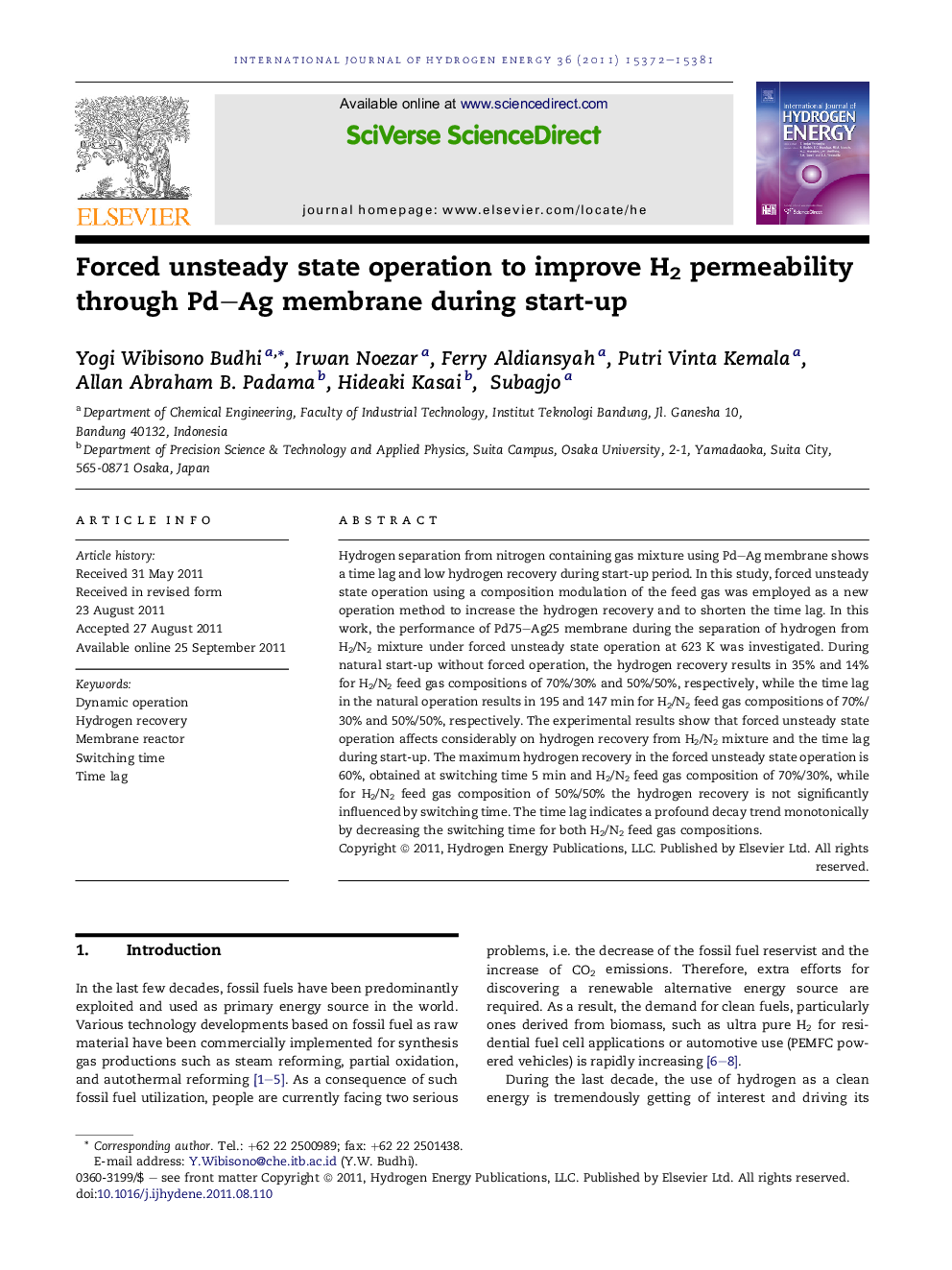| Article ID | Journal | Published Year | Pages | File Type |
|---|---|---|---|---|
| 1271831 | International Journal of Hydrogen Energy | 2011 | 10 Pages |
Hydrogen separation from nitrogen containing gas mixture using Pd–Ag membrane shows a time lag and low hydrogen recovery during start-up period. In this study, forced unsteady state operation using a composition modulation of the feed gas was employed as a new operation method to increase the hydrogen recovery and to shorten the time lag. In this work, the performance of Pd75–Ag25 membrane during the separation of hydrogen from H2/N2 mixture under forced unsteady state operation at 623 K was investigated. During natural start-up without forced operation, the hydrogen recovery results in 35% and 14% for H2/N2 feed gas compositions of 70%/30% and 50%/50%, respectively, while the time lag in the natural operation results in 195 and 147 min for H2/N2 feed gas compositions of 70%/30% and 50%/50%, respectively. The experimental results show that forced unsteady state operation affects considerably on hydrogen recovery from H2/N2 mixture and the time lag during start-up. The maximum hydrogen recovery in the forced unsteady state operation is 60%, obtained at switching time 5 min and H2/N2 feed gas composition of 70%/30%, while for H2/N2 feed gas composition of 50%/50% the hydrogen recovery is not significantly influenced by switching time. The time lag indicates a profound decay trend monotonically by decreasing the switching time for both H2/N2 feed gas compositions.
► We study the hydrogen permeation through Pd–Ag membrane. ► We examine a novel method using square wave perturbation of the feed. ► The results show that the dynamic operation affects the time lag and hydrogen recovery. ► Dynamic operation has proven for better performance for H2 permeation.
